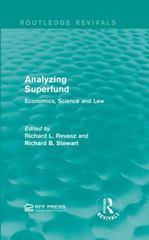Question
Consider the representative consumer model where the goods are homogeneous. The inverse market demand curve is , where is the market price and q is
Consider the representative consumer model where the goods are homogeneous. The inverse market demand curve is , where is the market price and q is the aggregate output. There are n firms in the market. Output of firm-i is denoted by . So .
(i)Suppose the cost function of a firm-i is and the firms are symmetric. Find the monopolistic competitive outcomes consisting of the equilibrium number of firms, equilibrium output produced by each firm, the equilibrium market price and the social welfare. (5 mark)
(ii)Suppose there is a technological innovation that reduces the per unit cost of production but the fixed cost of accessing the new technology rises. Consequently, the cost function of a firm-i becomes . Find the monopolistic competitive outcomes consisting of the equilibrium number of firms, equilibrium output produced by each firm, the equilibrium market price and the social welfare. (5 mark)
(iii)Compare the equilibrium outcomes of innovation to the pre-innovation case. What are the welfare implications of this innovation? (5 mark)
Step by Step Solution
There are 3 Steps involved in it
Step: 1

Get Instant Access to Expert-Tailored Solutions
See step-by-step solutions with expert insights and AI powered tools for academic success
Step: 2

Step: 3

Ace Your Homework with AI
Get the answers you need in no time with our AI-driven, step-by-step assistance
Get Started


